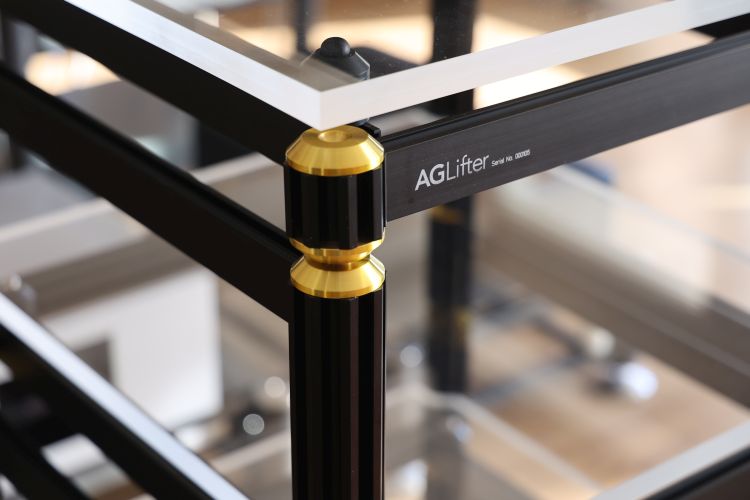
CH A1.5 Amplifier
Further upping the game by involving the 50 kg heavy CH Precision A1.5 power amplifier, I set out to compare the Apollo Power Amp Stand to two other Platforms. Firstly, my usual Artesania Aire Platform with Carbon Fiber Linear Arms, and secondarily, the Finite Elemente Pagode Master Reference Platform that was brought along at a later stage while working on this review.
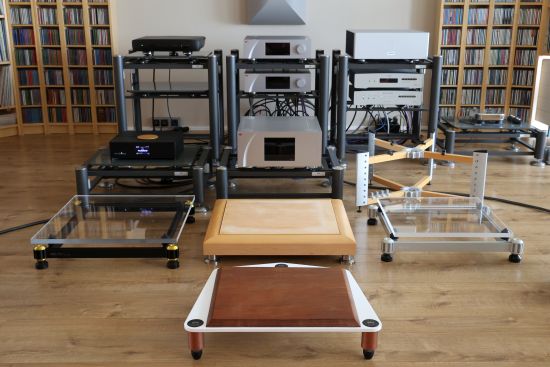
The Pagode is by now a rather old model but I think a lot of people will be familiar with it so I thought it good to include it as a further reference for comparison. The Artesania Aire platform is what I normally use with the A1.5 amp. In this case, I place the amp directly on the Carbon Fiber Linear Arms’ 4 Beechwood feet, just as I do with the other CH components. So, in this case, I do not use the KSH2 Krion shelf as an intermediate layer.
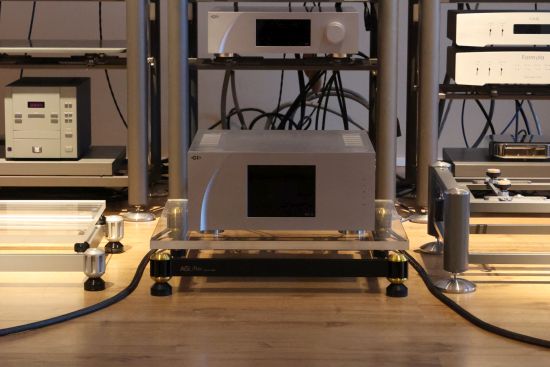
Moving the A1.5 from the Aire to the Apollo Power Amp Stand, there is a massive increase in bass weight, and along with this, the impression that the bass extends lower. I’m not sure if this is truly the case but it certainly seems that way. In comparison, the Artesania Aire sounds relatively light-footed. Here, we are touching on the rather fundamental difference between the two platforms, which is that the Aire is indeed airy and ethereal whereas the Apollo is decidedly beefy and grounded.
This theme is further solidified in other sonic aspects where the Aire is ultra-delicate and seems to offer Retina-like resolution but not the ultimate in mid-bass solidity or overall physical presence. Conversely, the Apollo reduces the level of precision and articulation but makes up for this with a seductively rich and voluptuous bass, a sweet, lush, and super-liquid midrange, and a treble that is open but never offensive.
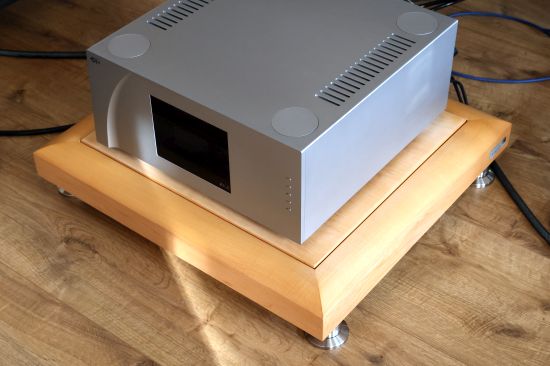
Moving the A1.5 amp to the Finite Elemente Pagode MR (with Cerabase footers) provides yet another, again rather different, sonic perspective. While the Pagode sounded competitive to the Aire + KSH2 Krion shelf when used with a Music Server or CD player, I feel that it does not make for an ideal combination with the CH Amp. I’m not sure why, but somehow, the Pagode lends the amp a particularly thick and meaty property that makes it sound less agile and expressive. While its more wooden timbre compared to the Apollo can be acoustically convincing, prolonged listening makes this aspect stand out as an added quality whereas the Apollo leaves the interpretation more up to the music and the equipment. Granted, the Apollo also has a certain identifiable “character” in the shape of its sweetness and warmth but I feel this is less imposing than the Pagode’s thickness and woodenness. But maybe I’m just used to predominantly “non-sounding” racks. And maybe some listeners feel that the Aire and Apollo are under-representing some aspects of the performance. As always, YMMV.
In any case, so far, these are interesting results for sure! I’ll get to the full Apollo rack shortly but before I do, there’s one more experiment that I must do.
Dulcet Feet Swapping
In order to try and assess how much of the Apollo’s superlative performance stems from the Dulcet 20 H.P.C Brass Feet, I tried both versions under the Crescendo Power Amp Stand. Please note that I left the smaller standard 19 Dulcet feet underneath the Acrylic in place.
As standard, the Crescendo Amp Stand comes supplied with standard (aluminum) Dulcet 20 Feet which yielded the established performance. Now it was time to see what the Dulcet 20 H.P.C Brass Feet would bring. Due to these feet’s much heavier weight, I was expecting the feet to make the sound fuller or fatter but the opposite happened.
As it turns out, the Dulcet 20 H.P.C Brass Feet sound livelier, more open, more grippy, more expressive, and honestly just plain better, without introducing any downsides. Well, if I had to mention something, I could add that the H.P.C. Brass Feet are more revealing of the source quality and thus less forgiving. In other words, they can be perceived as less friendly. But on balance, the Amp Stand remains gently sweet, musical, and still very far from being clinical. So there you have it: these feet are a major contributor!
All in all, though, the Feet swap does not yet make an Apollo out of the Crescendo. For that, we’d also need to swap out the smaller Dulcet 19 Feet as well as the end caps for the H.P.C. Brass counterparts. In any event, the extra expenditure for the Apollo over the Crescendo seems well worth it.
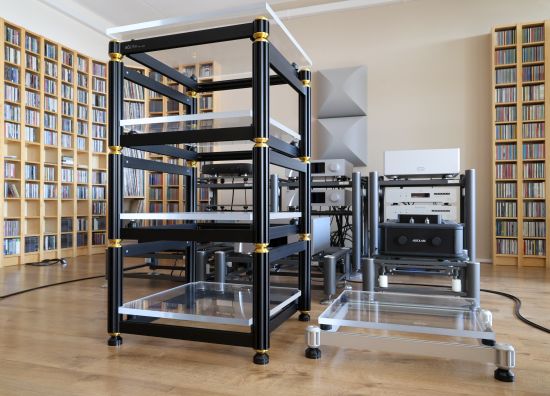
Apollo Modular Audio Rack – Preliminary setup and tests
Now, it was time to build out the complete Apollo rack one level at a time while moving the core components of my system one by one. As the first building block of the Apollo Rack-to-be, I started with the bottom level and moved the A1.5 from the Apollo Power Amp Stand over to it.
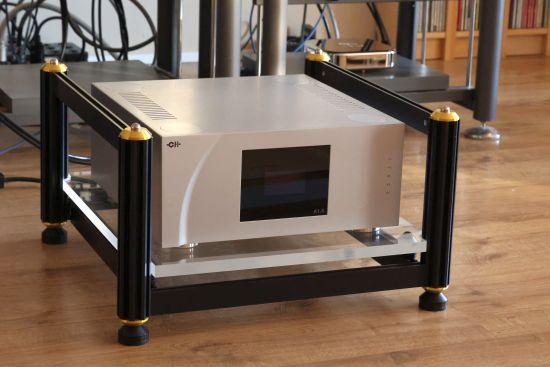
It’s a nice fit! And thanks to the rack’s structure where the next level has a large offset, there’s more breathing space on the top than there may seem to be at first sight.
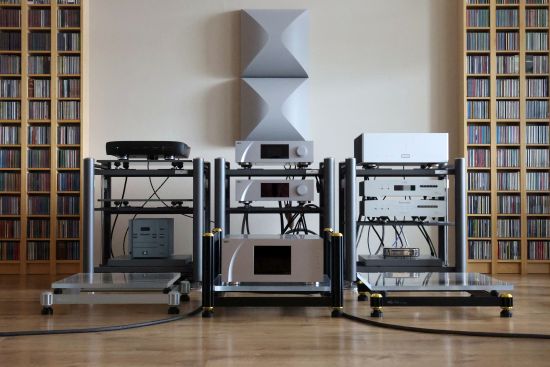
Surprisingly, after moving the amp from the Apollo Power Amp Stand to the bottom level of the Apollo Rack and leaving the rest of the system unchanged, I detected a small sonic difference in that the Amp Stand sounds slightly freer and airier, but really just slightly. Nevertheless, in addition to extra ease of access and easy swapping (if you are a reviewer), this may be a good reason to put the power amp on its dedicated Amp Stand.
Continuing the Apollo Rack build, I added the second layer and placed the preamp on its Acrylic surface that I initially fitted on Rubber Bearings.
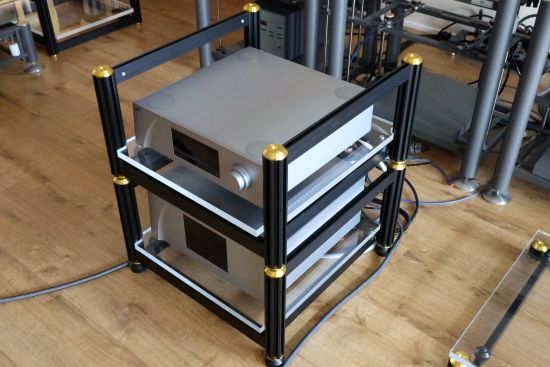
The third layer was for the DAC which was placed on Steel Bearings.
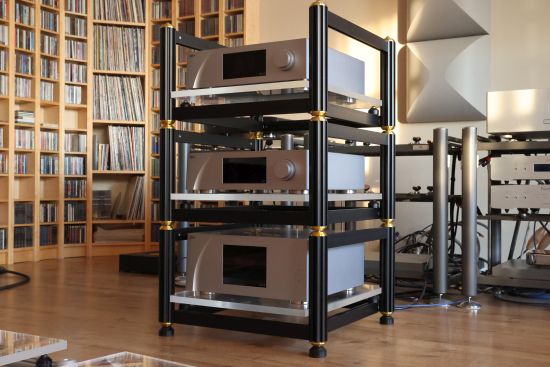
On top of the third module, I placed the H-Frame which would be host to the two Music Servers, one at a time.
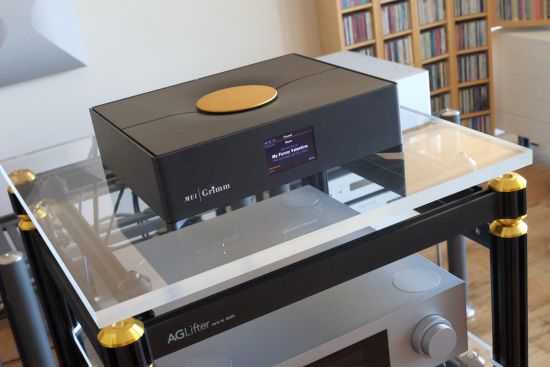
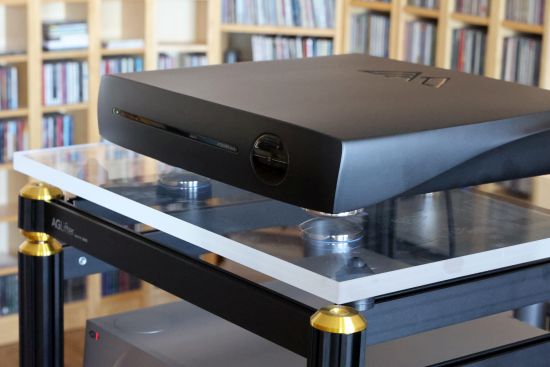
Rubber or Steel Bearings
Initially, I followed the AG recommendation for the Bearing types to use for each product group. The Power Amp and Server were using Rubber Bearings and the DAC was using Steel Bearings. I just had my doubts with regard to the Preamp. Likewise, one could assign the Antipodes and Grimm Music Servers to the “Streamer” category, meaning they are recommended to use with Rubber bearings, or, considering they are servers and not pure streamers, they could be assigned to the “Other” group meaning they are best used with Steel bearings. To find out what worked best, I simply tested the servers and the preamp both ways.
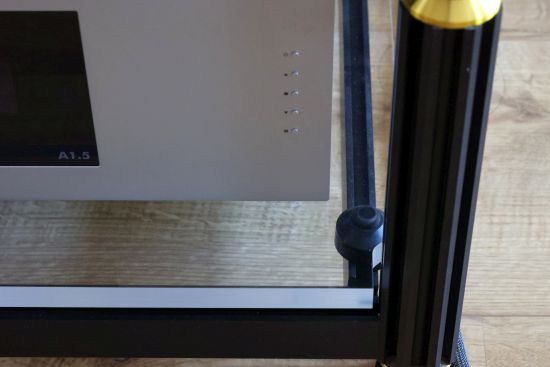
First, I tended to the server which is on the top-level H-Frame. Starting out on Rubber bearings, I swapped to Steel bearings to find that the sound was now considerably tighter, more articulate, and direct. But I also found this reduced the musicality as a good portion of smoothness and inherent liquidity was reduced. I certainly appreciate tightness and articulation but not when they come at the expense of my enjoyment of the music. So, out went the Steel bearings, and back in came the Rubber bearings. And this worked equally well for the Antipodes Oladra as for the Grimm MU1. So, it would seem that Servers can be treated the same as Streamers.
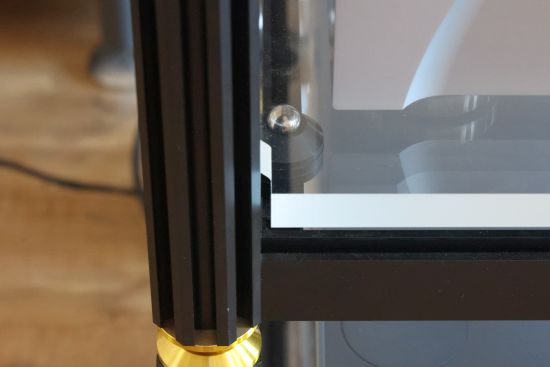
The next component about which I had doubts was the preamp. I started with Rubber bearings but felt the overall sound of the system was a little bit too mellow. So, in came the Steel bearings, and hey, presto! The sound balanced out just perfectly!
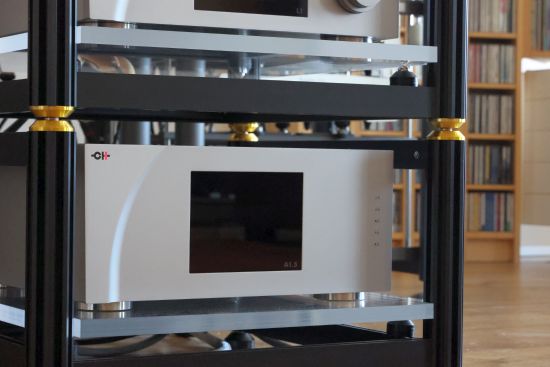
Now crisper, faster, and more communicative while retaining all the smoothness and richness. Evidently (or in this case at least), preamplifiers should not be considered as belonging to the same category as Power Amplifiers and Integrated Amplifiers.
Next: Listening Round 2 – Apollo Modular Audio Rack and Conclusion

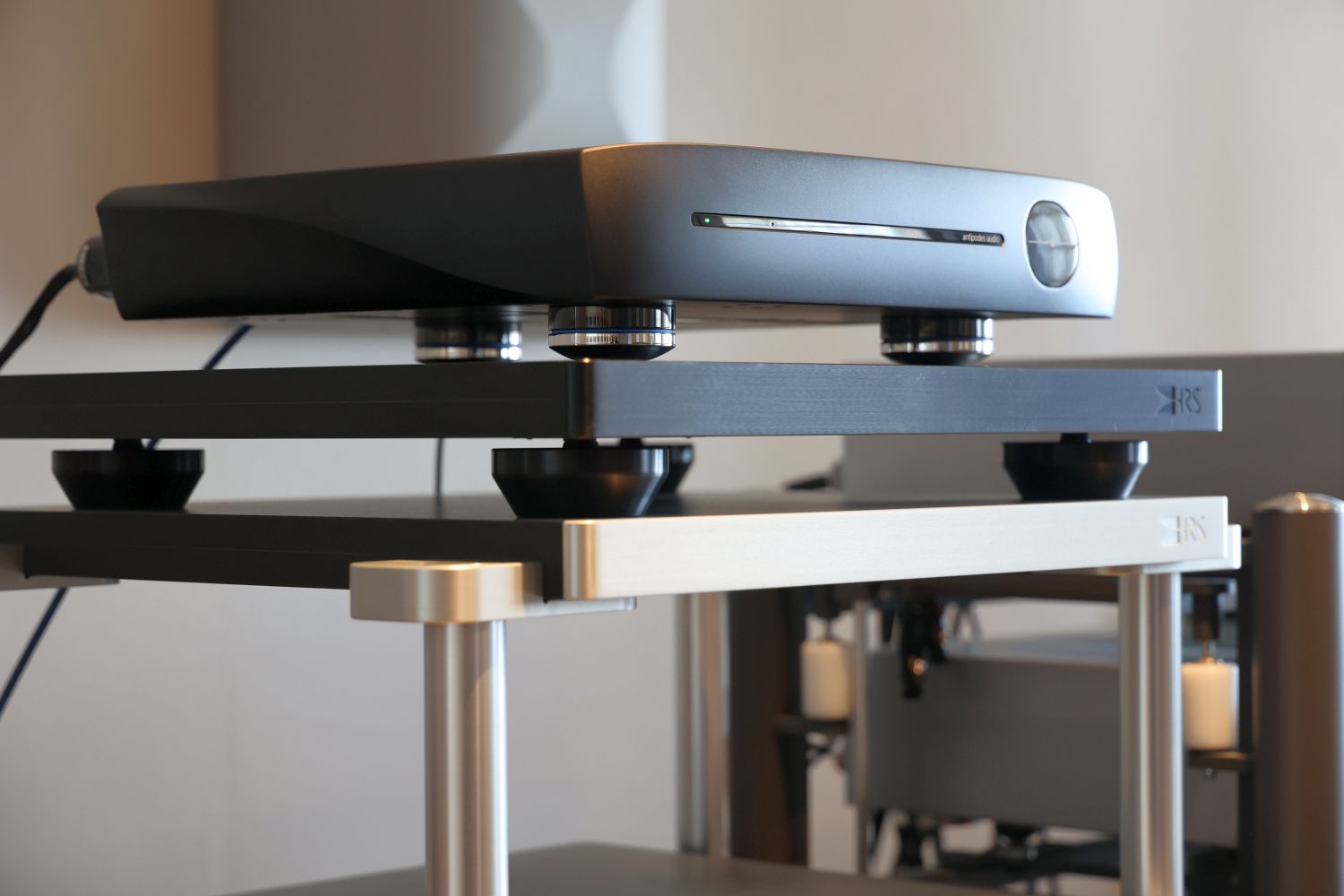


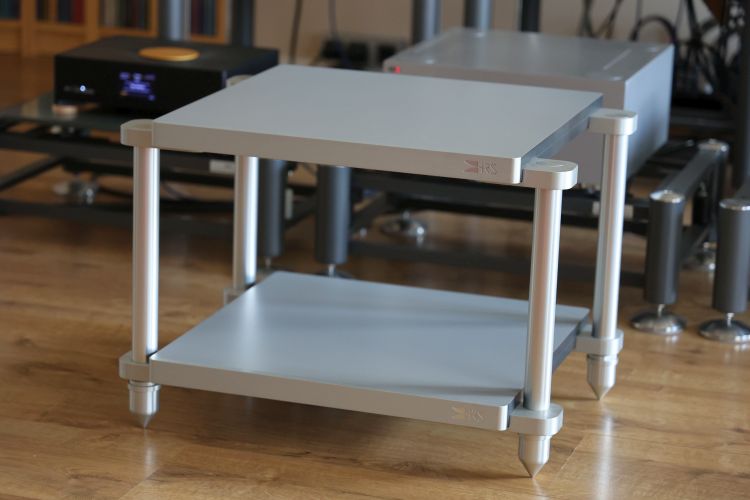
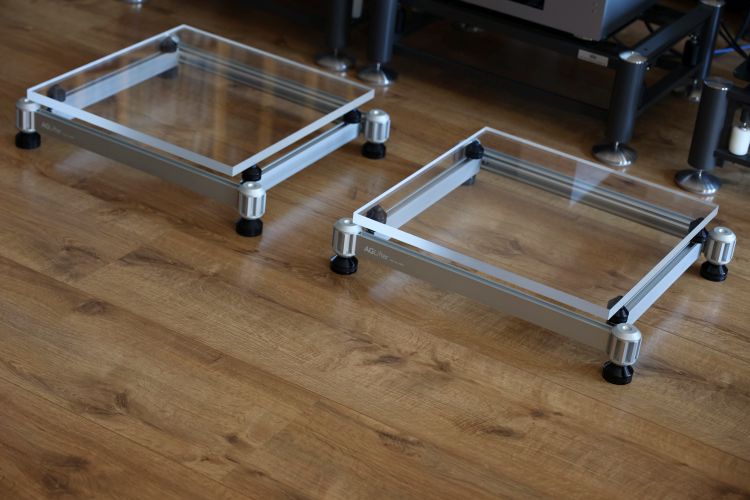
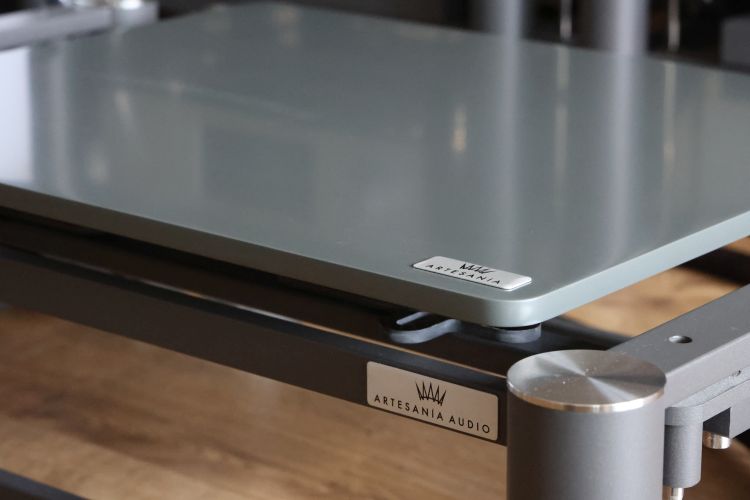
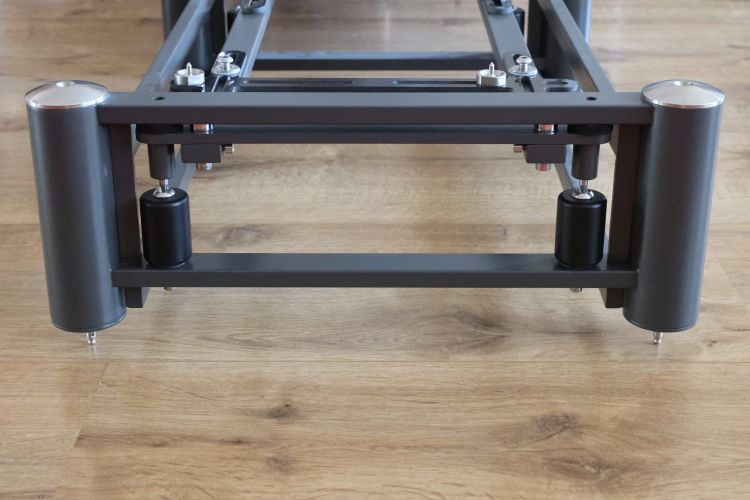
Great review Christiaan. We use AG Lifter Apollo at Antipodes Audio. In our view it presents everything in natural proportion, achieving a believable timbral balance, and so allows us to hear what our servers are actually doing.
It is possible to get racks that accentuate the edges of the sound, at the expense of the body of the sound, and so they can appear to be more detailed. Some people like that ‘hollowed out’ sound, but I don’t, and the real sound of voices and instruments is not like that. At the other end of the spectrum, there are racks that seem to slow everything down, and the Apollo does not do that either.
The details are all there, with great speed, just not thrown at you in any unnatural way, so you actually get more information about how the artists are playing their instruments. In our view that is crucial to enjoying the emotional message in the music, which is much more important than enjoying a sonic spectacular that presents fireworks when no fireworks were actually present.
For what it is worth, I prefer our servers on the hard bearings – it gives us a slightly better balance between the edges and the body of the sounds, and that probably echoes your comments about the sonic balance of these racks. Every system needs a few final touches to get the balance right and having two types of bearing has been very handy for us.
Great and not one measurment??? Will my 22 inch wide streo fit.
The dimensions are in the review. Here’s a quote: “As standard, the outer dimensions of the frame are 600 mm x 600 mm. With 500 mm between the pillars, both in width and depth and basically unlimited free space in the rear so long as the component’s feet are supported on the 600 mm deep Acrylic platform, all audio equipment should fit comfortably.”
You are wrong this measurment was left out of everything I could see. ” With 500 mm between the pillars” This is wrong also ” all audio equipment should fit comfortably.” My Sansui 9090db is 540MM wide. IT WILL NOT FIT.